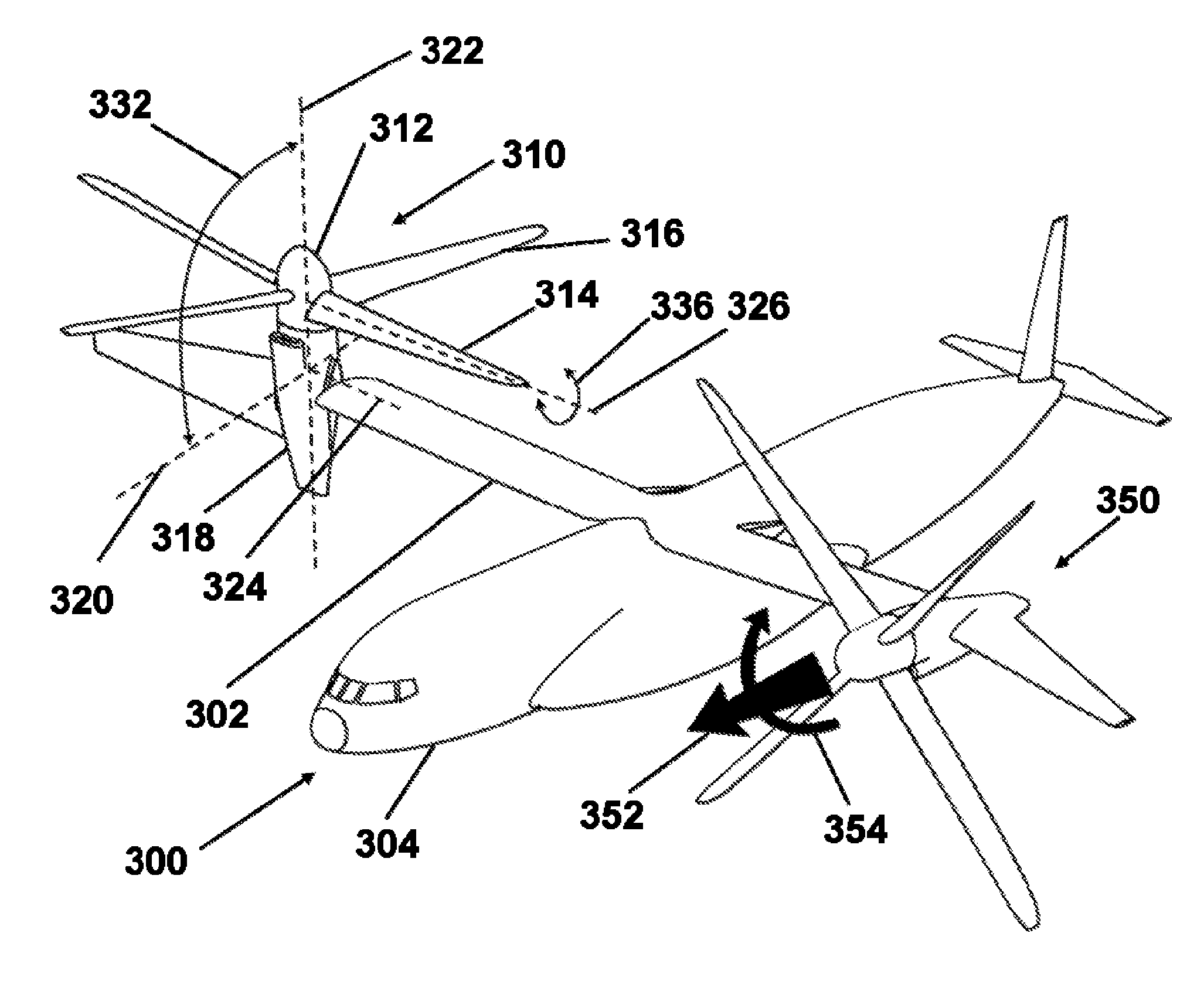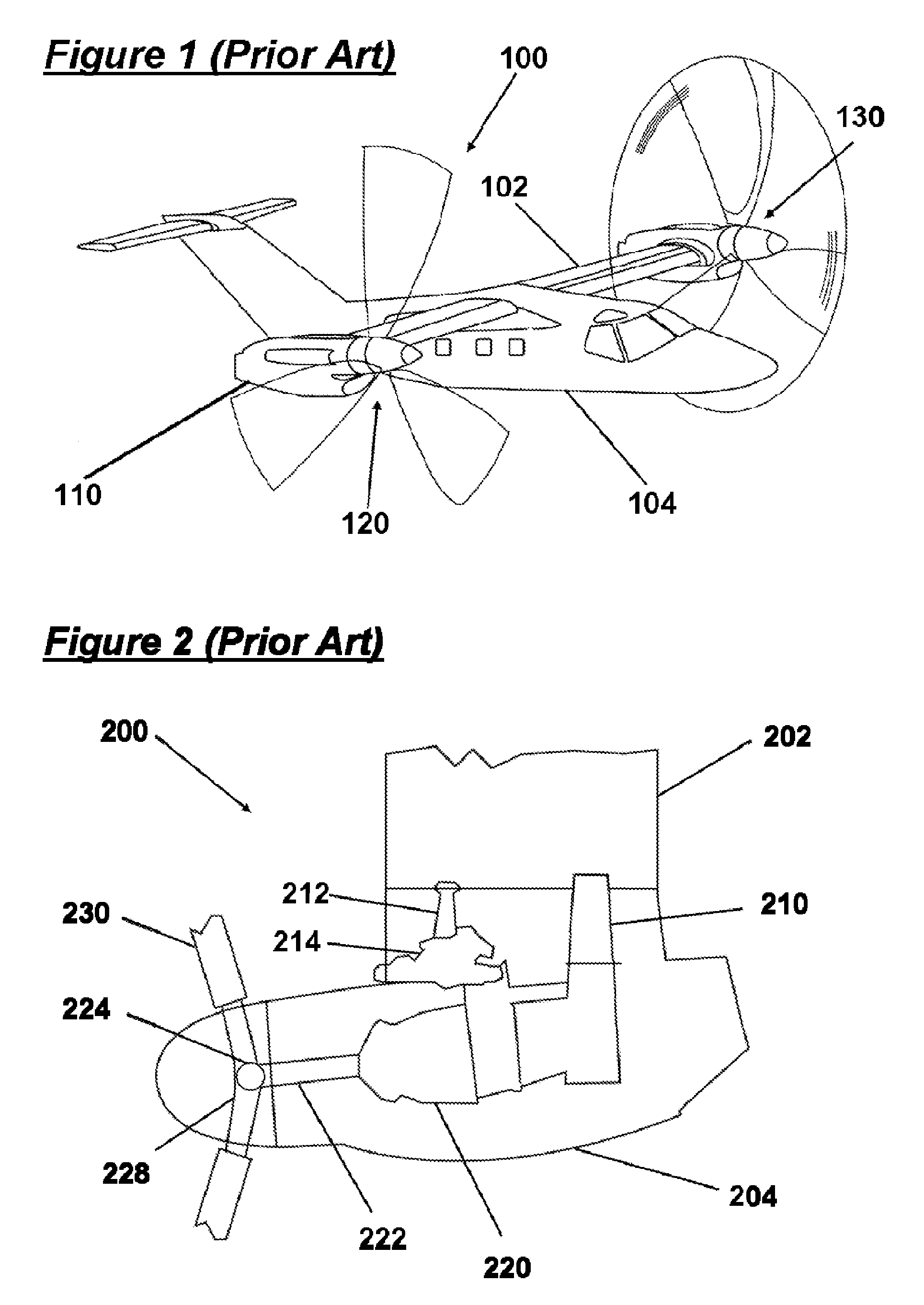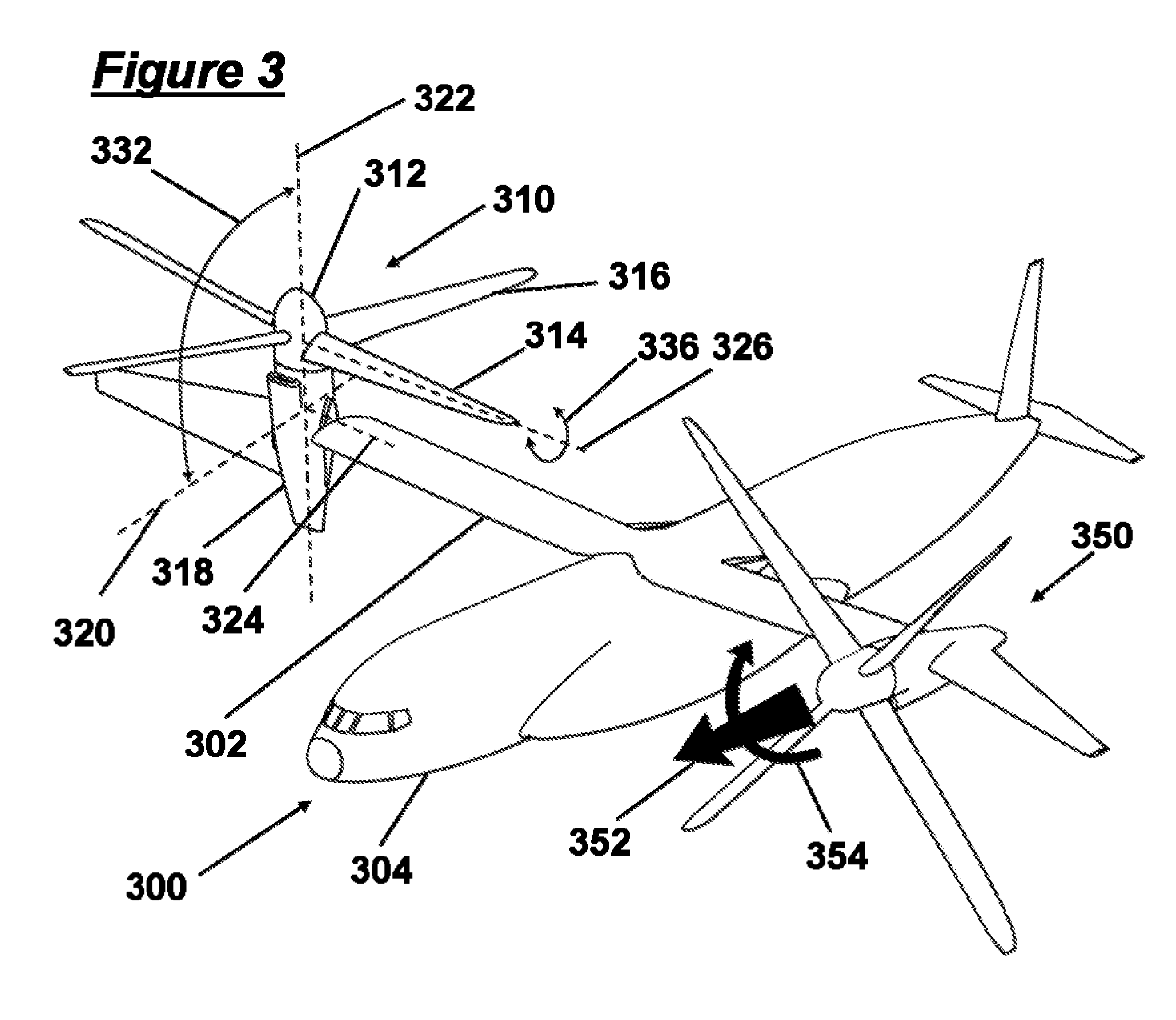Tilt Actuation for a Rotorcraft
a rotorcraft and tilting technology, applied in the field of rotorcraft, can solve the problems of inability to accommodate very large moments that might be generated, the prior art actuator mechanism cannot practically produce such large forces, and the first motor will not stop the mechanism from functioning
- Summary
- Abstract
- Description
- Claims
- Application Information
AI Technical Summary
Benefits of technology
Problems solved by technology
Method used
Image
Examples
Embodiment Construction
[0025]FIG. 3 is a perspective illustration of a preferred tiltrotor aircraft 300 comprising a wing 302 and fuselage 304, a first tilting rotor system 310 shown in helicopter-mode position, and a second tiling rotor system 350 shown in airplane cruise-mode. The wing 302 remains essentially fixed to the fuselage 304 during flight in either vertical takeoff mode or cruise flight. In preferred embodiments, the first and second rotors in the first and second rotor systems 310,350 are of a stiff hingeless variety such as that described in U.S. Pat. No. 6,641,365 to Karem. Such rotor systems 350 transmit considerable forces and moments to the wing 302 and fuselage 304. In either helicopter-mode flight or airplane-mode cruise flight, the rotor generates thrust as indicated by block arrow 352 and moment as indicated by block arrow 354. Hingeless rotor systems for tiltrotors are unlike prior art gimbaled systems in that they can transmit considerable large moments, also referred to as mast mo...
PUM
 Login to View More
Login to View More Abstract
Description
Claims
Application Information
 Login to View More
Login to View More - R&D
- Intellectual Property
- Life Sciences
- Materials
- Tech Scout
- Unparalleled Data Quality
- Higher Quality Content
- 60% Fewer Hallucinations
Browse by: Latest US Patents, China's latest patents, Technical Efficacy Thesaurus, Application Domain, Technology Topic, Popular Technical Reports.
© 2025 PatSnap. All rights reserved.Legal|Privacy policy|Modern Slavery Act Transparency Statement|Sitemap|About US| Contact US: help@patsnap.com



